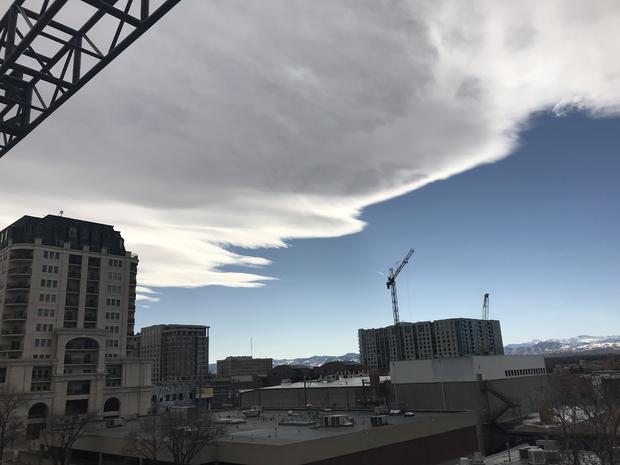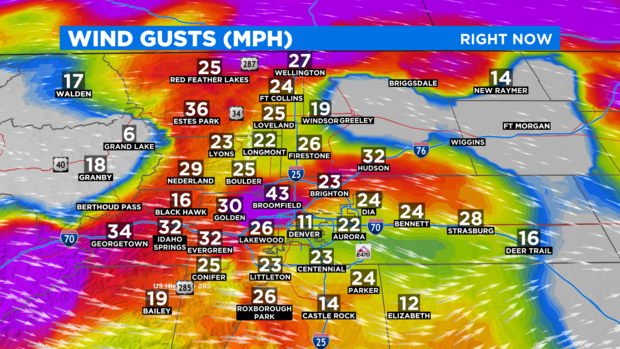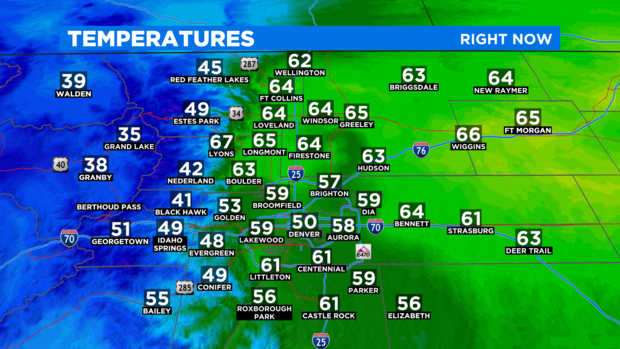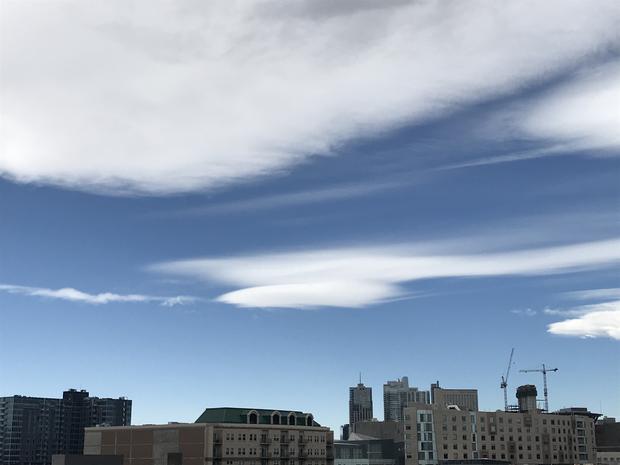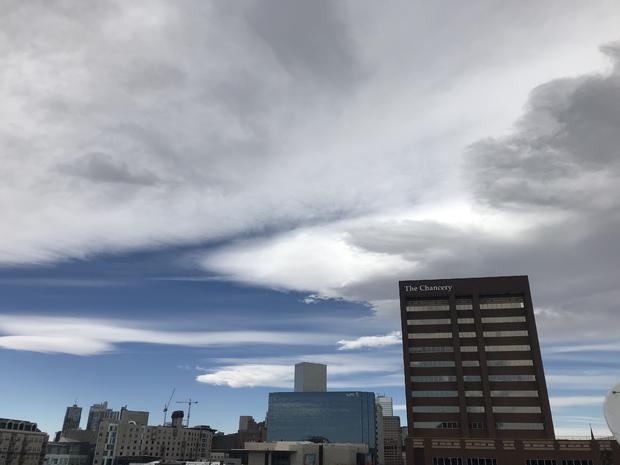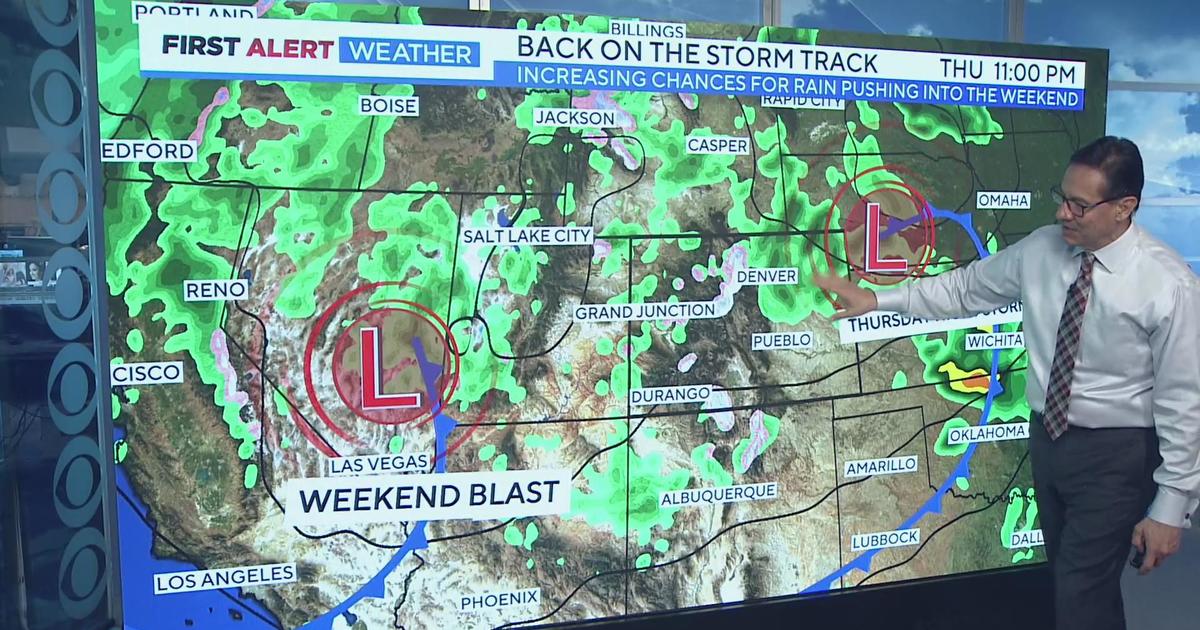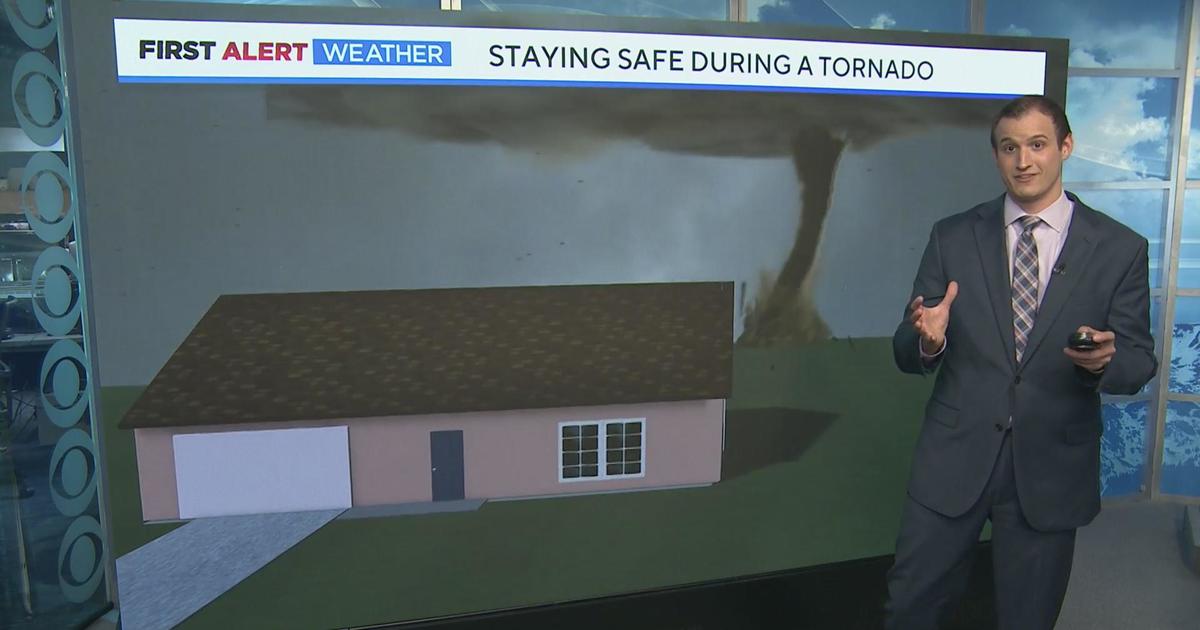Colorado Weather: Pesky Mountain Wave Clouds Show Up On Front Range Again
DENVER(CBS)- In eastern Colorado one of the big elements in picking up warmer temperatures is wind direction. For Denver and the Front Range of Colorado to get a big warmup, typically, there has to be a westerly wind or Chinook wind. This wind can really get the highs to rise.
But occasionally, if this westerly wind has any moisture in it the flow can create what is called a mountain wave cloud. This is what happened with our Wednesday weather pattern.
Wind gusts around the region kicked up in the 20 to 45 mph range from the west. But, it also had just enough moisture to get the wave clouds going.
These clouds can be really pesky to a weather forecaster. Because, it is so hard to predict when they will form and how long they will last. In the Wednesday afternoon image below, cities under the wave cloud tended to be in the 50s. While, those in the straight on sunshine were drifting up into the 60s.
The technical name for these types of formations are Altocumulus Standing Lenticularis Clouds.
They develop in fast air flow blowing from west to east over the Rocky Mountains. When the air is forced up it can create a gravity wave as as it crosses the Continental Divide. (Much like if you throw a rock into a lake and the water waves ripple outward.)
If there is enough moisture in the air flow, (it doesn't have to be much), standing clouds can develop in the crest of these waves and in Colorado that tends to be right over the Front Range Foothills and adjacent plains!
